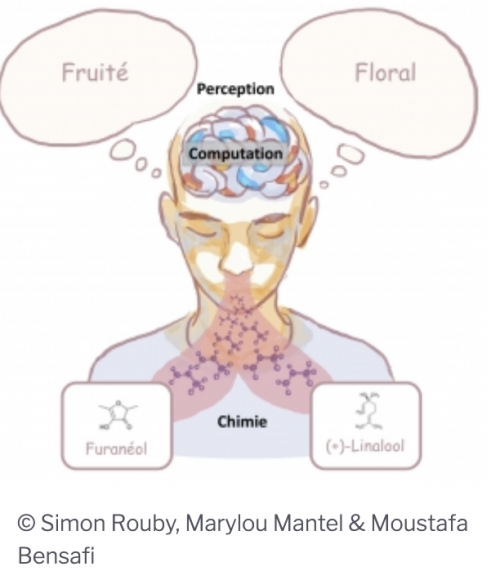
Links between odorant structure and olfactory perception revealed thanks to artificial intelligence
One of the major problems to be solved today for olfaction researchers of all disciplines is that of the relationship between the chemical structure of odor molecules and the perceptual properties associated with them, which is also called the "stimulus-percept" problem. ". It has been solved for a long time for vision and hearing and remains to be elucidated in olfaction. Some models nowadays make it possible to predict in a more or less precise way the pleasant or unpleasant character of an odor, its intensity and even certain olfactory qualities like their fruity or woody character. However, the relationship between the chemistry of an odor and its perception is very complex and still poorly understood: there may indeed be more than one chemical rule characterizing an olfactory quality, just as two very similar molecules in their structure can evoke different qualities.
To better understand these complex mechanisms, the researchers set up an interdisciplinary collaboration combining cognitive science, computer science and chemistry in order to develop a computational model that takes into account the chemical characteristics and olfactory qualities of more than 1500 odorous molecules. Using an original data mining approach, they developed an algorithm that extracted the best rules or combinations of chemical rules describing 74 olfactory qualities. Thus, far from a simple correspondence between a structural characteristic of a molecule and an accurate olfactory quality, two-thirds of the qualities studied are found to be associated with more than 3 chemical rules. By comparing the rules thus extracted with other existing databases, researchers have also been able to find these correspondences for several descriptors such as "fruity", "woody" or "camphor".
This descriptive model, calculated from data mining methods, aims to enable researchers to construct and test new hypotheses on the link between the chemical characteristics of molecules and the perceptions they evoke, and thus to advance in understanding the problem of "stimulus-percept". The results of this research can also be applied in the fields of food, perfumery or control of the chemical environment.
For further details:
Chemical features mining provides new descriptive structure-odor relationships.
Licon CC, Bosc G, Sabri M, Mantel M, Fournel A, Bushdid C, Golebiowski J, Robardet C, Plantevit M, Kaytoue M, Bensafi M.
PLoS Comput Biol. 2019 Apr 25;15(4):e1006945. doi: 10.1371/journal.pcbi.1006945. eCollection 2019 Apr.
